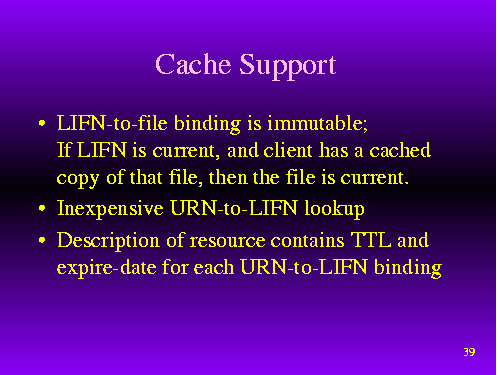
Click slide for next, or goto previous, first, last slides or back to thumbnail layout.
RCDS supports caches in several ways. First of all, if a client finds out that the file it needs is named by a particular LIFN, and it has the file named by that LIFN in cache, then it knows it already has a current copy of that resource. And the URN-to-LIFN lookup for the file (should it be necessary) is cheap. Second, each resource description can contain a time-to-live and expire-date for the URN-to-LIFN binding. That way, the client knows whether the resource is likely to have changed.
TTL and expire-date have specific meanings within RCDS resource descriptions: TTL is a statement by the content-provider that the value of that field in the description (say, the LIFN field) will not change within a particular interval. Expire-date is an assertion that the content-provider expects the binding to no longer be valid at a particular time.
Click slide for next, or goto previous, or back to thumbnail layout.